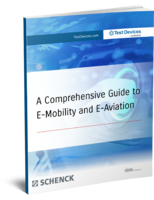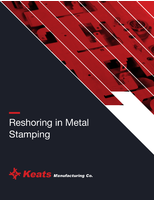Choosing the Appropriate Capping Technology for Your Application
Share:
Capping machine design falls into two basic categories - In-line cappers and rotary Chuck-Style cappers. These machines differ dramatically in both their core design as well as in their techniques for applying closures.
Using In-line machines, bottles traveling on the infeed conveyor of the machine are gripped on their outer edges by side gripping belts that are speed matched to the conveyor. The neck of the gripped bottle passes under the cap dispenser and a cap is taken directly from the cap dispenser by the finish of the neck. The closure resting on the finish passes through a series of cap tightening wheels that spin the cap onto the threaded neck finish. One final pair of wheels, which are equipped with friction clutches, delivers the desired torque to the capped bottle. The capped bottle is then released from the gripping belts at the discharge of the capper.
On Chuck-Style cappers, the oriented closure at the end of the cap chute is not picked-up by the bottle. It is instead picked out of the chute by a cap transfer device, which then places it into the gripping chuck of a capping head. This pick-and-place mechanism can be either a rotary starwheel with pockets or pegs or can be individual pegs associated with each capping head station. Bottles on the in-feed conveyor of the machine enter an in-feed timing screw that separates them to match the specific pitch of the capping heads. Bottles are transferred to an in-feed star wheel, which then delivers them to the turret star wheel where they are placed and centered directly underneath the capping heads. The rotating capping head with a cap held in its gripping chuck descends onto the bottle and applies the cap to the desired torque. Application torque is controlled by a clutch mechanism within each capping head. Once the cap is applied, the jaws of the chuck open and the head rises off of the capped bottle. Bottles are restrained from rotating while the cap is applied by a gripping system while the bottle is in the turret starwheel. Capped bottles are then placed onto the exit conveyor by a discharge starwheel.
The following compares the attributes of each type of machine, including financial considerations, operating features, and performance characteristics.
Initial Investment: An In-line capper requires a much lower initial investment compared to a rotary Chuck-Style capper. A Chuck capper costs 4 to 10 times the price of an In-line for the purchase of the base machine.
Cost of change parts: In-line cappers have a lower cost for the additional change parts required to run different sizes of containers and closures. The cap handling equipment is limited to the sorter, chute, and dispenser. There are no cap transfer mechanisms or individual chucks as there are with a rotary machine. Changes in cap diameters on In-line machines are accommodated by adjusting the spacing of the tightening wheels. The cost for bottle handling change parts are also avoided with In-line cappers as their side gripping belts adjust to accommodate differing size containers.
Footprint: An In-line capper will typically have a smaller footprint than a rotary machine. In many cases, an In-line machine can be mounted over an existing section of bottle conveyor.
Operating Speeds: Rotary Chuck-Style cappers have much higher speed capabilities than In-line machines. Chuck cappers can be supplied with only one head to as many as 40 heads that operate at production speeds from as low as 10 bottles per minute (BPM) to speeds as high as 1200 BPM. In-line cappers are typically speed limited to a maximum of 200 BPM.
Cap Size Considerations: In-line cappers are generally limited in the diameter of cap that can be dependably applied. The cap tightening wheels of In-line machines contact only a small area on each side of the cap and cannot generate the sufficient torque required to apply these large caps. In capping technology, the greater the diameter of a closure, the greater the application torque required to apply it.
In addition, containers that have large diameter neck finishes are readily ovalized by the In-line capper's side gripping belts that are used to prevent rotation. Ovalization of the neck finish will result in misapplied and cocked caps. For these reasons, in-line machines perform best with closures smaller than 53mm in diameter. Conversely, since the gripping chucks of a rotary capper provide 360 degrees of contact with the sidewalls of the cap, there is positive gripping for the application of torque regardless of the size of the closure. In addition, bottles are supported by the machined pockets of the starwheel to help maintain the round shape of the neck finish during the cap application.
Cap Shape Considerations: An In-line capper will generally be limited to applying closures that are round in shape. Chuck-Style cappers can apply round, rectangular, square, oval, tapered and reverse tapered caps.
Caps with Tamper Evident Bands: Chuck-style cappers have a tremendous advantage over In-line machines when applying closures with tamper evident (TE) bands built directly onto the cap. The TE band typically has an interference fit with the threads on the neck finish of the bottle. Direct pick-off of these caps by the bottle results in the caps sitting crooked on the bottle finish and generates a high number of cocked caps with In-line machines. A Chuck-Style capper has a TE cap positively held by the jaws of the chuck and the TE cap is brought down squarely onto the bottle finish and held securely during its entire application, avoiding the incidence of cocked caps. In addition, the capping head on a Chuck-Style machine can deliver a downward force (top load) onto the closure as it is being applied. Top load helps force the TE band over the thread finish of the bottle neck to properly engage the threads of the cap with the threads of the neck finish.
Torque Accuracy Considerations: For closures that require a narrow range of application torque to ensure their proper performance, a Chuck-Style capper will deliver more accurate control of the torque being applied to the closure. The positive gripping chuck and clutch within each capping head combine to deliver more accurate performance over In-line machines.
Closure Style Capabilities: Because an In-line capper relies on the neck finish of the bottle itself to pick-off the cap from the cap dispenser, these machines are limited to running closures that lend themselves to being easily picked-off. This is suitable for non-TE banded screw-on caps. A Chuck-Style capper has the flexibility to run both TE banded and non-TE banded closures as well as closures that are applied with a push-down motion, non-round closures that are first oriented and then pushed down, plug-style closures that are pressed into a bottle, and fitments that are pressed over a bottle finish.
Container Style Capabilities: As In-line cappers must rely upon side gripping belts to restrain the container from rotating during cap application, these machines are limited, when running round containers, to those that have sufficient rigidity to withstand the forces applied by these belts. The contoured pockets of the bottle handling equipment of a rotary capper allow containers to be gripped without deforming their shapes. In addition, lightweight PET containers, such as those used for water, juice, and soft drink packages, can be handled by their neck support ring, which is an integrally molded part of the bottle finish. The sidewalls of these bottles are too weak to be run on In-line machines.
A decision on which type of capping machine is appropriate for a particular project should include: an evaluation of the attributes of the current packages, attributes of the future packages that might be run on the machine, the capabilities of the machine technology being considered matched up against the performance expectations for the packaging line, and the capital available for the investment in the machine.
Andy Monroe
Sales/Marketing Manager
Fowler Products Company
P.O. Box 80268
Athens, GA 30608-0268
Fowler Products Company
Phone: 706-549-3300 x156
Email: amonroe@fowlerproducts.com
www.FowlerProducts.com




